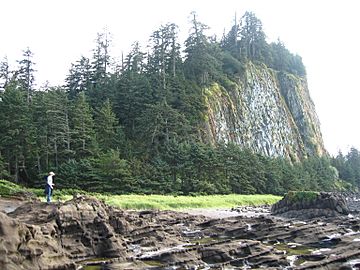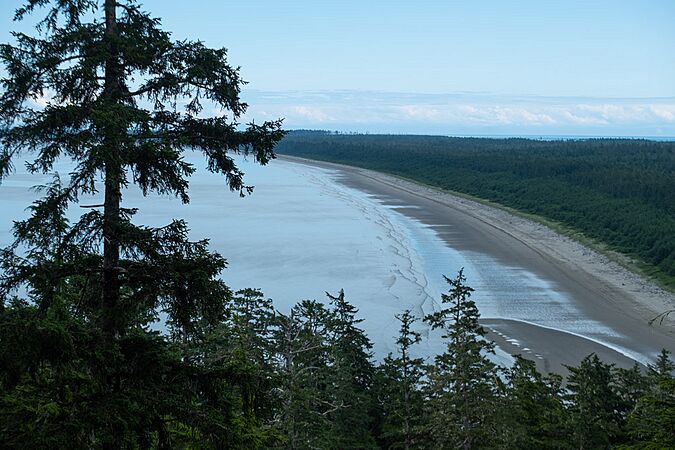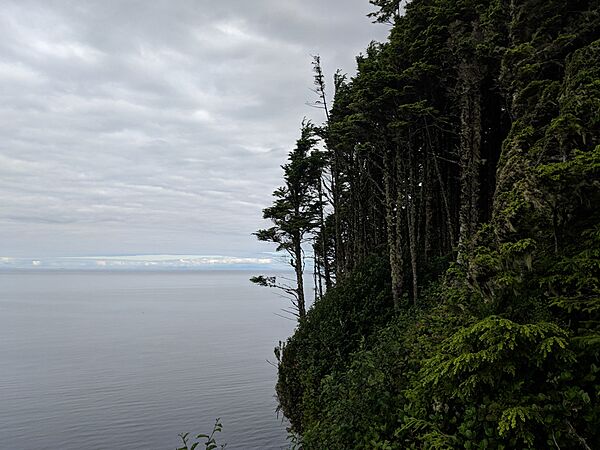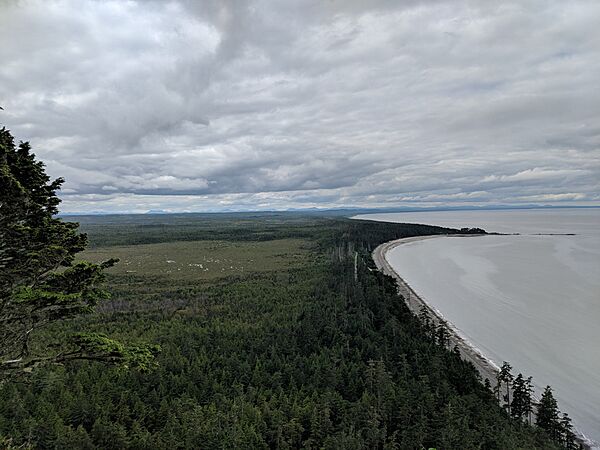Tow Hill facts for kids
Quick facts for kids Tow Hill |
|
|---|---|

Tow Hill on Graham Island
|
|
| Highest point | |
| Elevation | 125 m (410 ft) |
| Prominence | 118 m (387 ft) |
| Listing | List of volcanoes in Canada |
| Geography | |
| Location | Graham Island, British Columbia, Canada |
| Topo map | NTS 103J/04 |
| Geology | |
| Age of rock | 2 million years |
| Mountain type | Volcanic plug |
Tow Hill is a unique and interesting natural landmark located on Graham Island in British Columbia, Canada. It's a tall, isolated hill that stands out in the landscape. This special place is known for its amazing rock formations and its connection to the local Haida people.
Tow Hill is found about 21 kilometers (13 miles) east of the town of Masset. It sits on the northern tip of the Naikoon Peninsula, which is part of Haida Gwaii. Near Tow Hill, you'll find the mouth of the Hiellen River. This area was once home to a Haida village called Hiellen.
What is Tow Hill?
Tow Hill is what scientists call a "volcanic plug". Imagine a volcano that was active a very long time ago. When it stopped erupting, the magma (molten rock) inside its vent cooled down and hardened. Over millions of years, the softer rock around it wore away, leaving behind this hard, solid core – the volcanic plug.
Tow Hill is made of special rock called basalt. This basalt formed into tall, many-sided columns that fit together like puzzle pieces. These columns solidified about two million years ago during a time called the Pleistocene period.
Tow Hill's Location
Even though some maps might connect Tow Hill to the Queen Charlotte Mountains, it's not actually part of that mountain range. Tow Hill is separated from the main mountains of Graham Island by wide, flat areas of forest and marshland. It's officially located on a lowland area called the Argonaut Plain.
Tow Hill used to be its own special area called Tow Hill Provincial Park. Now, it's part of a much larger protected area called Naikoon Provincial Park. This park covers most of the flat northeastern part of Graham Island.
Legends and Meanings
Tow Hill is a very important place to the Haida people. The name "Tow" comes from a Haida word that means "place of food." This suggests that the area was rich in resources for the community.
There are many old legends and stories about how Tow Hill came to be. One interesting feature mentioned in these stories is a "blowhole" at the base of the hill. This blowhole is a natural opening where water can be forced out, sometimes making a loud noise.
Images for kids





